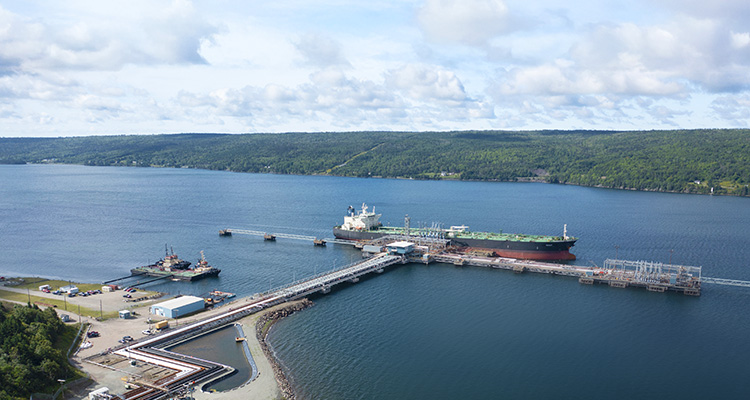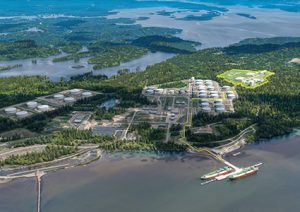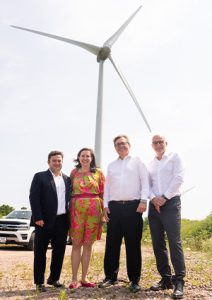
How EverWind Fuels is powering a transformation that will help green hydrogen decarbonize global industries
Headquartered in Nova Scotia, EverWind Fuels (EverWind) is a Canadian company developing North America’s first large-scale green hydrogen and ammonia production facility. Founder and CEO Trent Vichie joins New Energy Today to share a more detailed overview of the company and its ambitious vision: “EverWind was launched to leverage Atlantic Canada’s abundant wind resources to power a new era of global clean energy, through the production and supply of green hydrogen and green ammonia. In 2022, we acquired the Point Tupper Terminal in Nova Scotia, which is a world-class industrial site with a deepwater port. It’s zoned for heavy industry and has an experienced local workforce. This acquisition allowed us to repurpose legacy infrastructure and move quickly into project development. Since then, we’ve made progress in bringing Canada’s first industrial-scale green hydrogen and ammonia facility to life at Point Tupper, including key engineering advancements, as well as securing all the necessary permits.

“This positions EverWind as the most advanced green hydrogen project in North America, an achievement that has been widely recognized by industry experts. Over the last three and a half years, we’ve permitted approximately 500 megawatts of wind energy across multiple sites in Nova Scotia. That lays the groundwork for a robust and scalable renewable energy project that supports our hydrogen and ammonia production goals. At the same time, we secured North America’s first environmental approval for a large-scale hydrogen and ammonia production facility, cementing our position as a leader in the field.”
The wind power aspect is vital for EverWind’s green hydrogen and green ammonia as to meet the strict definitions of green fuels, including those set by the European Commission for Renewable Fuels of Non-Biological Origin (RFNBO) they must be produced using new renewable energy and achieve a greenhouse gas emissions intensity reduction of at least 70 percent in order to be certified as RFNBO-compliant. However, EverWind is planning to go above and beyond this decarbonization target. Hydrogen produced using fossil fuels today generates between 10-12 kilograms of carbon dioxide for every kilogram of hydrogen extracted. EverWind’s green hydrogen production will reduce that by over 99 per cent. EverWind is among the first projects to be pre-certified by a third-party auditor to meet these requirements.
“We’ve also secured approval for a two-gigawatt transmission line across the Strait of Canso to deliver renewable energy directly to our site,” confirms Trent. These wind farms will connect directly to EverWind’s Point Tupper facility, providing the renewable energy needed to produce green hydrogen and ammonia for export to international markets, as well as for domestic use.
“We’ve completed the front-end engineering design for our hydrogen and ammonia project and secured offtake term sheets with major international players,” he continues. “Today, we’re proud to lead the development of Canada’s green hydrogen economy; we’re working with communities, our Indigenous partners, government, and industry to ensure this transition creates real benefits locally while supporting decarbonization efforts around the world.”
With ambitions as bold as supporting global decarbonization, Trent explains the origins of such an innovative project: “The inspiration to start EverWind came from a recognition of a key challenge of renewable energy. Renewables like wind and solar are intermittent: the wind doesn’t always blow, and the sun doesn’t always shine. That variability limits how much renewables can contribute to the energy system. Green hydrogen provides a powerful solution to this challenge. It allows us to capture renewable power when it’s available and convert it into a storable, transportable fuel, either hydrogen or ammonia, that can be used when and where it’s needed. It effectively bridges the gap between renewable generation and consistent energy supply.”
Trent moves on, elaborating on the key benefits of adapting the legacy infrastructure at the Point Tupper Terminal: “One of the biggest advantages of the site is that it’s already a world-class industrial terminal with significant infrastructure in place. This meant we didn’t have to start from scratch with building a port, which saved around $400 million in capital. It gives us a major head start, both reducing the capital cost and the environmental impact. We’re essentially taking an existing industrial energy hub that’s been handling traditional fuels and adapting it for the clean energy future.”
The project is, of course, not without challenges. Trent shares some the obstacles the company has had to overcome: “Firstly, although necessary, the regulatory

process can be lengthy. It requires years of environmental studies and permit processes. Another big challenge is the economics of the project. To compete with fossil fuels, green hydrogen needs to be cost-effective. We have been optimizing the engineering to drive down costs. Then there is also the infrastructure that is needed to transport the product, both domestically and internationally, like import terminals and pipelines. Success depends on the synchronicity of the whole value chain. This requires careful planning and the leveraging of existing assets to accelerate timelines where necessary.”
Alongside keeping jobs in the area and generating new employment, EverWind’s commitment to local communities runs much deeper, as Trent explains: “We absolutely believe the clean energy transition has to be inclusive and community driven. That’s why we’ve prioritized engagement and long-term partnerships with local municipalities, including First Nations, from the very start. With our First Nations partners, for example, we’ve taken steps to advance Indigenous economic reconciliation by enabling equity ownership in our projects. More than just symbolic, this approach is about creating sustainable economic participation and ensuring that Indigenous communities are co-developers with a seat at the table through the lifecycle of the project.”
Looking to the future, Trent then outlines the company’s goals for the remainder of the year and beyond: “This year is a pivotal period for the project. We’re focusing on reaching final investment decisions, advancing construction, and finalizing offtake agreements. We have already, and will continue to hit significant milestones this year, making it a very exciting time for the project.
“In five years, we expect to be fully operational, running Canada’s first commercial-scale green hydrogen and ammonia facility, delivering clean fuels to global and local markets. Alongside supplying customers in Nova Scotia and across Canada, we want to be actively displacing fossil fuels in hard-to-decarbonize sectors. Our goal is to be recognized not only as a clean energy pioneer, but as a trusted partner to governments, industry leaders, First Nations and communities alike.
“Our goal,” Trent concludes, “is to set the benchmark for how major renewable energy projects are developed with transparency, Indigenous equity participation, environmental responsibility, and shared economic benefits.”